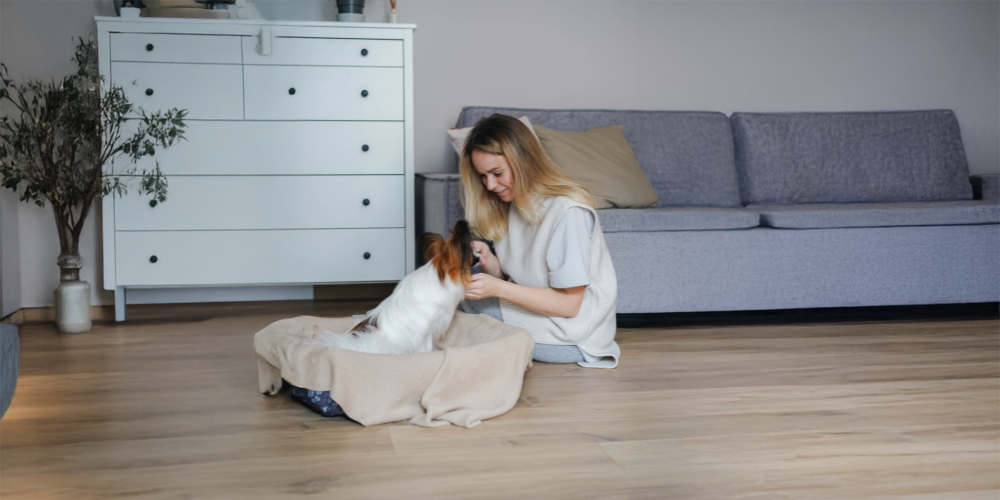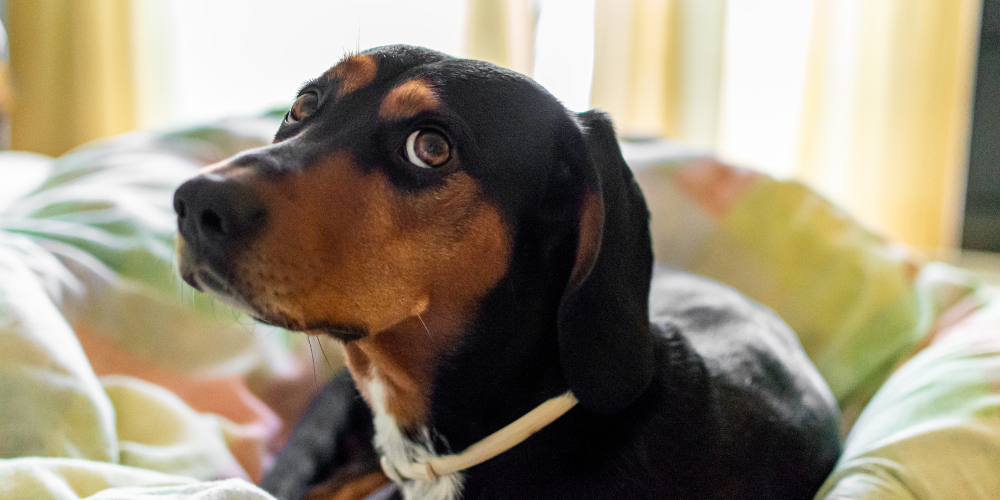
Your dog cannot tell you when something feels wrong, so a simple check at home can make a big difference. Think of it as a weekly tune up that takes a few minutes. It helps you spot small issues early and gives you peace of mind. Use this easy head to tail guide and keep notes on anything unusual so you can share it with your vet.
1. Check their breathing
Watch your dog when they are calm or asleep. Count how many times they breathe in during one minute. A quick trick is to count for 15 seconds and multiply by four. Most relaxed dogs take fewer than 32 breaths per minute. If you keep getting higher numbers, speak to your vet.
Listen for wheezing, coughing, loud snoring, or struggle to catch breath. Notice if your dog pants more than usual during light activity or even while resting. These signs can point to heart or lung problems and should be checked by a vet.
2. Look at their nose
A warm or dry nose does not always mean a sick dog. Noses can change through the day and still be healthy. What matters is what you see and feel. Check for cracks, sores, unusual colour changes, crusting, or discharge. If you notice bleeding, swelling, or persistent changes, book an appointment with your vet.
While you are here, wipe away mild crusts and keep the skin around the nostrils clean. If discharge is thick or coloured, that is a sign to get help.
3. Check their eyes
Your dog’s eyes should look bright, clear, and alert. A small amount of brown tear staining in the corners is usually harmless, but wipe it away so you can spot new changes. If you see any of the following, contact your vet:
- Yellow or green discharge
- Excessive tearing
- Squinting or keeping one eye closed
- Whites of the eyes turning pink or red
- Cloudiness, swelling, or a bulging look
- Rubbing or pawing at the eyes
For gentle at-home care and supplies, see our Dog Ear and Eye Care range.
4. Check their ears
Give each ear a quick sniff. Healthy ears should not have a strong smell. A sour or yeasty odour can suggest infection. Look into the ear and check for redness, swelling, excess wax, or discharge. Sticky, black, or crumbly gunk is a warning sign.
Watch for behaviour clues too. Head shaking, scratching, or tilting the head often means discomfort. Clean only the outer ear flap unless your vet has shown you how to do more. Find gentle cleaners and wipes in Ear and Eye Care.
5. Look inside the mouth
Dental health affects your dog’s whole body. If your dog allows, lift the lips and take a quick look. You want to see healthy pink gums and teeth with minimal tartar. Pale, bright red, or bluish gums, broken teeth, bleeding, strong bad breath, or lumps inside the mouth all need a vet check.
Regular dental care helps a lot. Try daily brushing, dental chews, or water additives. Explore Dog Dental Health for toothpaste, brushes, and chews that make the job easier.
6. Feel their skin and coat
Run your hands slowly over your dog’s whole body. This is a cuddle and a check at the same time. The coat should feel smooth and look shiny. The skin should be free from irritation. Look for bald patches, flakes, redness, rashes, scabs, or unusual lumps.
Check closely for fleas, ticks, or flea dirt that looks like black pepper. Scratching, chewing, or licking one spot a lot can point to parasites or allergies. Keep protection up to date with trusted preventatives from our Flea and Tick Prevention collection and soothe sensitive skin with products in Dog Skin Health.
7. Check the paws and nails
Look at each paw pad for cuts, cracks, swelling, or lodged grass seeds. Spread the toes gently and inspect between them. If nails click on the floor, they are too long. Overgrown nails can split, curl into the pads, or change the way your dog walks. Do not forget the dewclaw higher up the leg, as it often grows faster than the others.
For safe trimming at home, choose sturdy clippers, a file, or a grinder from our Dog Grooming Tools.
8. Do not forget the back end
Lift the tail and take a quick look around the anus. Anal glands can become blocked or infected and may cause swelling, redness, scooting, or a strong smell. If you see these signs, your vet can help and may express the glands. Keep the area clean and watch for licking or discomfort.
The takeaway
A short health check once a week helps you notice small changes before they become big problems. It does not replace your vet, but it makes you a more aware owner and gives your dog the best chance to stay happy and healthy.
Next steps: keep a simple note in your phone with your dog’s resting breath rate and any changes you see. Stock up on essentials like flea and tick preventatives, gentle ear and eye care, targeted skin support, dental care, and reliable grooming tools so you are ready for your weekly check.


